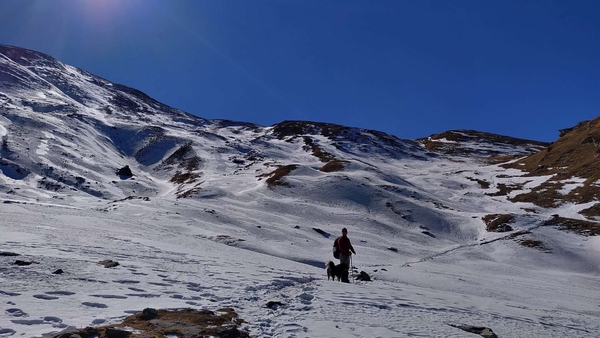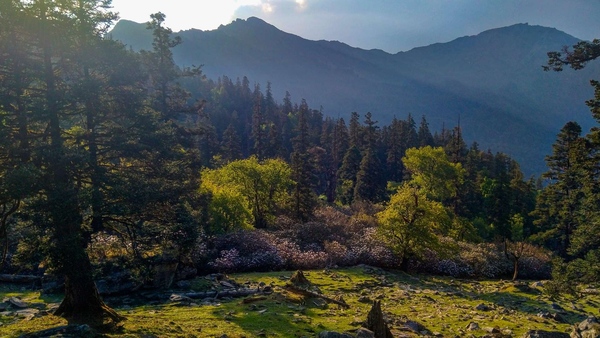Pangarchulla Peak Trek
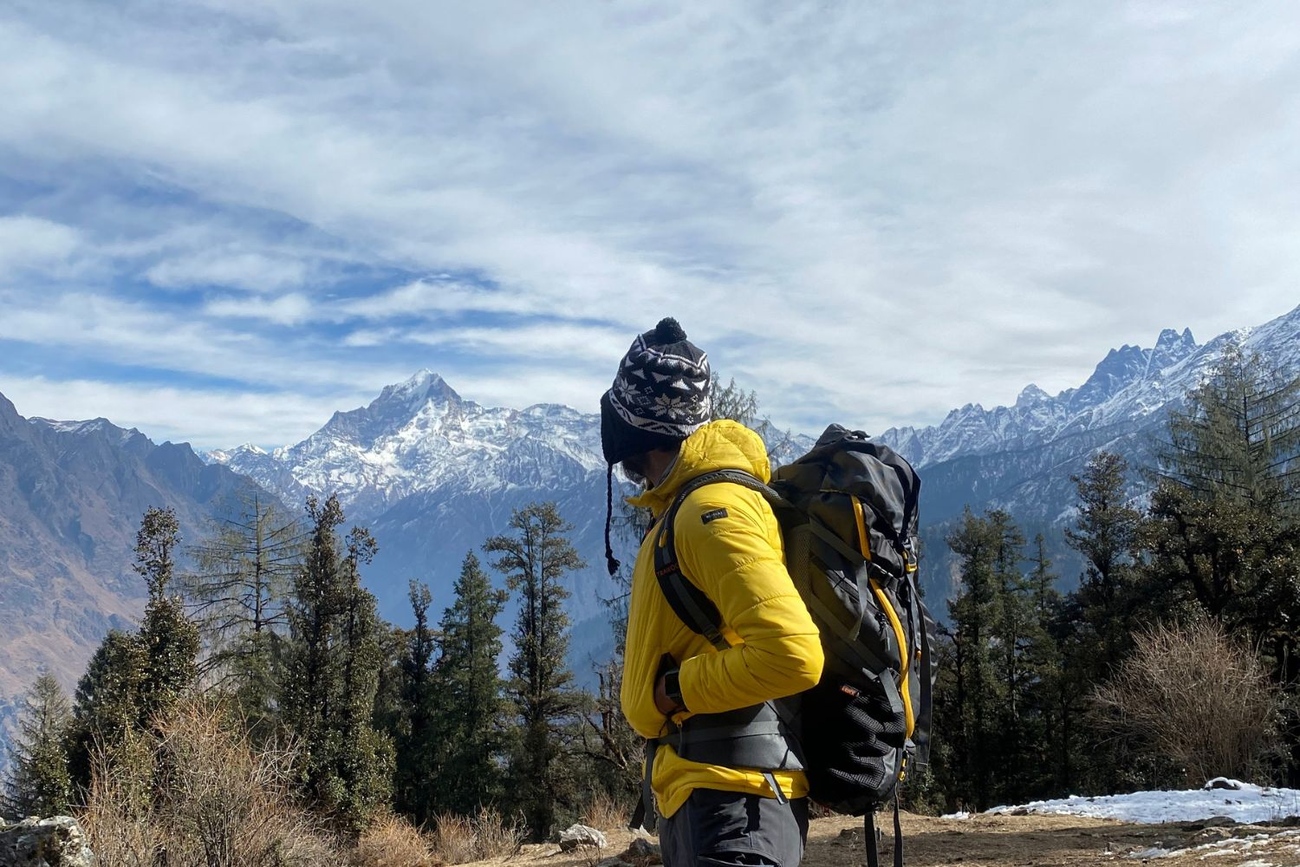
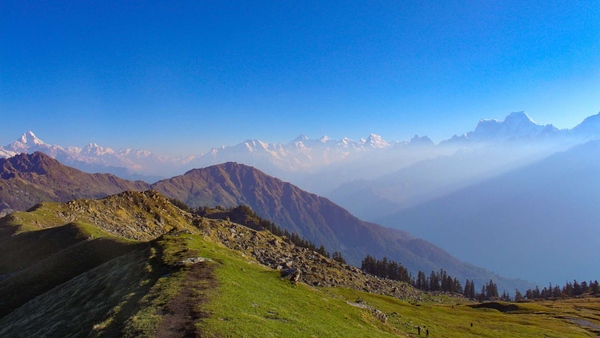
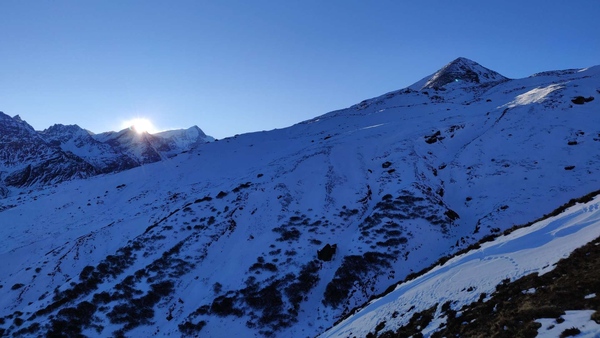
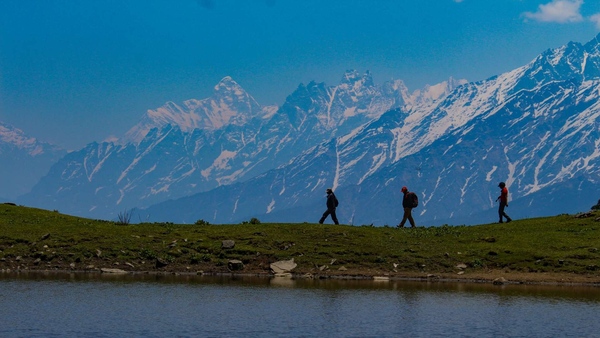
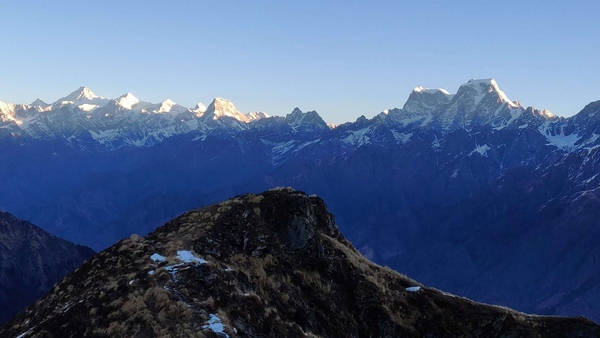
Starts From
₹ 10000/-
About The Trip
Are you excited to set out for a high-altitude Himalayan trek in the Garhwal Region? Well, the Pangarchulla Peak trek route offers you one of the most captivating high mountain views and it’s considered to be one of Garhwal Himalayas’s most celebrated treks! Resting at 15,070 0ft, it offers a perfect adrenaline test for mountaineering enthusiasts. We are not pumping your levels of expectation, but you will surely get to spot Nanda Devi to your northeast to all major peaks of Badrinath valley and finally stretching to Kedarnath valley peaks on the west, once you reach the summit.
The elevation of the Pangarchulla trek is roughly 15,070 feet. It takes about 7 days to complete the trek and acclimatization, with a total distance of about 38 kilometers. Since the Pangarchulla Summit Trek is regarded as challenging, it falls under the category of moderate to difficult treks.
When it comes to tourism and spirituality, Uttarakhand is one of the states in India that receives the most visitors. Along with all of this, Uttarakhand also serves as a global hub for adventure sports and trekkers. This location has a lot to offer travellers and nature lovers, from the high-altitude juggernaut mountains to the pristine water bodies. The surrounding landscapes are so breathtaking that trekking in Uttarakhand will undoubtedly leave you speechless. Adventurers and trekkers travel here from all over India, and they always leave with a sense of peace and contentment in their hearts. Pangarchulla Trek is one of the most beautiful treks in Uttarakhand and one that you should definitely undertake at least once in your lifetime.
Every year, hordes of hikers are drawn to the Pangarchulla trek because it is so full of adventure, tranquilly, and beauty. The trek ascends to provide views of some of the tallest mountains in the Garhwal Himalayas, while also passing through mesmerising forests and rhododendrons in bloom. As you ascend higher up, you can treat yourself to a spotless carpet of powdery snow. The initial trail meanders through lush forests with a variety of enchanting floral species crisscrossing the ground. The trek's undulating terrain passes through thick oak forests and high-altitude pastures, making you instantly happy. You might need to climb through a fair number of boulders to complete the trek, but the rewards are spectacular! The heart-pounding summit ascent is truly surreal and sends your blood racing as you labour through snowy boulder fields. After a strenuous ascent, you'll be rewarded with literally breath-taking views of the tallest Himalayan peaks that surround you.
The Pangarchulla Trek is best scaled between March and May and again just before the start of winter, between September and October. This is due to the possibility of significant snowfall during the winter, which would make the trek more challenging. Summertime temperatures (April to May) range from 12 to 20 degrees, with overnight lows as low as -5 degrees. High-altitude meadows and the summit of Pangarchulla will both see an accumulation of snow. The month of May is when the snow starts to melt. People who travel there between April and May must be aware of this and ready for snowy weather. If you live somewhere in the plains where the temperature tends to hit half-centuries, pangarchulla in the summer is thought to be quite reviving. Due to its steep slopes and slippery terrain, the Pangarchulla Trek is not recommended during the monsoon months of July and August when rain is pouring down from above. A further 3 to 5 degrees of temperature decline occurs in October and November following the monsoon season.
The novices will find this trek to be difficult. This trek's difficulty level leans more toward demanding, necessitating exceptionally high levels of physical stamina and endurance. Before embarking on this trek, it is strongly advised that you have hiked at least 11,000 feet in elevation, so beginners should stay away. Due to the high altitude, there is a high risk of developing altitude sickness. Teenagers can therefore choose to go on this trek with ease. Additionally, effective acclimatisation is essential for completing the trek successfully.
Price
Tickets
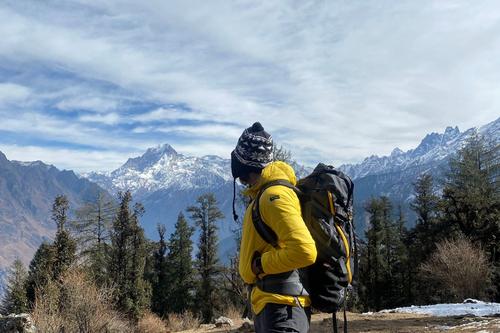
From : INR 13000/-
INR 10000/-
per person
Tickets
 Download PDF
Download PDF
Brief Itinerary
Inclusions & Exclusions
Inclusions
Exclusions
Detail Itinerary
Dinner
Private Vehicle
Homestay
Details
Driving Duration: 10-11 hrs drive | Driving Distance: 254 km
Altitude: 8,790 feet
The Pangarchulla Peak Trek's base camp is in Joshimath, and a pickup is arranged from the Rishikesh ISBT at 6 AM. Trains, buses, and taxis provide frequent service between Dehradun and Delhi. The drive through Devprayag, where the Bhagirathi and Alaknanda rivers of the River Ganga meet, will take ten hours.
The drive is exhilarating, filled with heart-pounding Himalayan roads with mountains and a deep gorge on either side. In the evening, arrive in Joshimath and check into the hotel or guesthouse where dinner and an overnight stay are planned.
All Meals
Trek
Tents
Details
Trekking takes 6-7 hours, covering a distance of 12 km.
Gain in altitude: 2,118 ft (8,790 ft to 10,908 ft)
Moderately difficult. After a continuous 20-minute steep ascent, there are 45 minutes of gradual ascent. Steep once more for about an hour, then 1.5–2 hours of gradual and steep ascents follow.
An ascending dirt path leading away from the main road and toward Tugasi village marks the beginning of the trek. The path leading inside the village is this one. When you get to a T intersection, you must immediately turn left. The trail passes through farms and a series of level walks and gradual ascents. The mountain ridge in this area is bare and receives little to no snowfall in the winter. Watch out for the Dhauli-Ganga River as it passes the Vishnugad-Tapovan Hydro Power Station down below. With a series of steep and gradual ascents, the well-defined trail meanders along the mountain ridge. Watch for a rain shelter on the trail in the distance. The first landmark on the trail before arriving at Kharchi Village is this shelter. To get here, it takes about 20 minutes.
The trail makes a sharp right turn at the rain shelter, leaving you with the valley on your left. Ahead, you can see it swerving around the mountains. For the next 45 minutes, the trail gradually climbs while interspersed with a few switchbacks. You are taken to Lower Tugasi by it. There are numerous trails that leave from Lower Tugasi. Take the road that turns sharply to the left after passing the two water-powered flour mills.
This trail makes several switchbacks as it climbs quickly to Upper Tugasi. Here, you'll see a lot of cultivated land, including poppy and wheat fields, as well as cultivated flowers. The streams that supply the mills below will also be visible. Since the water in these is contaminated, avoid drinking from them. Upper Tugasi will be reached in 30 to 40 minutes.
The trail continues to climb steeply from Upper Tugasi. Although the fields are behind you now, the trail is still frequently populated by villages. While on this trail, Dronagiri stands out significantly among the mountains. You'll have to cross the final settlement in about 30 minutes. You can safely refill your water bottles at the water source you discover after the final hut.
From here, it will take 1.5 to 2 hours to get to Guling. There are both steep and easy climbs along the trail. The first oak trees start to appear 15 minutes before Guling, and you soon find yourself in a mixed forest. The trail circles the valley that you first saw when you set out from the shelter. But as you ascend, this keeps getting smaller. In the heart of the forest is the Guling campsite.
As you approach Guling, turn around. Here, Hathi and Ghora appear for the first time.
All Meals
Trek
Tents
Details
Trek Duration: 3-4 hours | Trek Distance: 6km
Altitude Gain: 102 ft (10,908 ft to 11,010 ft)
Difficulty: Moderate. Moderate ascent all the way to Khullara.
You will receive the necessary instructions regarding the trekking trails after early morning breakfast. We will start trekking from Guling to Khullara. En route, we will have our packed lunch. Later in the evening, we will check into our campsite at Khullara base. The remainder of the day is free time. You will get to see the enchanted starry skies above as dawn breaks.
After dinner, spend the night at Khullara base camp.
All Meals
Trek
Tents
Details
Trek Duration: 12-16 hours | Trek Distance: 14 km
Altitude Gain and Loss: ⇗ 4,060 feet; ⇘ 4,060 feet(11,010 ft to 15,069 ft and back to 11,010 ft)
Difficulty: Difficult. Initial gradual ascent followed by steep ascent over snow/boulders.
Start early at 4 AM in order to reach the summit before 11 AM.
As you leave Khullara Campsite and join the renowned Lord Curzon Trail, proceed in the direction of the forest ridge up ahead. The first 30 to 45 minutes of the trek are spent along a frozen rivulet through a forest ridge. There will be a thick layer of snow covering this section. It's a steep climb of about 100 metres. A huge snowfield will appear in front of you once you have carefully ascended the snow ridge section. Look up at the middle of the snow gully. The objective is to arrive there. Walking over the fluffy, soft snow causes the slope to become steep. The forest edge is finally behind you. Sunglasses can help prevent snow blindness.
The snow gully's top is reached after walking for 30 to 45 minutes. You can see Pangarchulla Main and Pangarchulla subsidiary summits from here.
Stay towards the true right of the snow ridge as you walk alongside gaining altitude. From this point on, the ridge may accumulate a lot of snow during the winter (Mid January till April). You arrive at the level snow grounds after 45 minutes of cautious snow hiking along the ridge. This might serve as the Pangarchulla Summit's advance base camp. In the winter, there isn't any water nearby, though. Observe the Chaukhamba massifs in the far north, then Mana, Kamet, Abi Gamin, Hathi Parvat, and finally Nanda Ghunti and Trishul from this location. The Dronagiri, Changabang, and Kalanka peaks stand out in the middle sight.
Although laborious, the final ascent to the Pangarchulla summit is not difficult. To open the snow route, it is advisable to have a trained guide with you. There are multiple steep sections on soft snow. Crampons, gaiters, and proper high ankle trekking boots will aid in climbing. Crampons are highly recommended to reduce the possibility of slipping on snow. In snowy conditions, the climb's section can take five to six hours. One can reach the summit in 4 hours during the post-monsoon season.
Watch the summit descend to the main peak of Pangarchulla from this vantage point. A total of six mountain ridges must be crossed to get to the peak's base. The area is completely covered in snow during the winter, making it challenging to move quickly through it. Take the snow trail that leads to a level hump after a 120-meter ascent and 60-meter descent. Sharp ascents and descents make this section difficult. It's time to climb the second snow hump after you've ascended the first one.
It might take an hour and a half to cross the second, third, and fourth snow ridges. Once you have a clear view of the summit climb from Pangarchulla Peak's base, you have reached the top of the fourth ridge. As you get closer to the peak's base, head toward the fifth ridge, which ascends gradually. The sixth ridge appears to be right nearby as you cross the fifth one.
From here to the peak's summit, it is about 300 to 350 metres of ascent. The best way to approach the climb to the summit is to first move along the right side of the connecting ridge. Halfway through the climb, look for an appropriate point from where the summit route needs to be established. From this point on, a route must be carved out of ice using an ice axe. As you turn to face the side ridge wall with a 60-degree incline, take a left. A fixed rope might be necessary, depending on the amount of snow that has accumulated. The last section of the summit climb is at the top of the razor-sharp cornice. Here, where the wind is particularly strong, the team should be huddled on a rope. During the last ridge walk, stay off the cornice's edge at all costs. The distance to the summit is under 100 metres. Enjoy the breathtaking 360-degree views of Garhwal peaks once you reach the summit. Nanda Ghunti, and Trishul ranges are visible from the summit for the first time.
The journey back involves a three to four-hour descent to Khullara's campgrounds. When descending on snow, exercise caution.
Breakfast, Dinner
Multiple Modes
Homestay
Details
After early-morning breakfast, there will be a briefing with all the information you need about the remainder of the trek starting from Khullara, we will trek to Tugasi Village. We will eat our lunch on the way. We'll begin the drive to Joshimath once we get to Tugasi. We will have dinner and spend the night at the designated homestay in Joshimath.
Breakfast
Private Vehicle
Stay Not Included
Details
After we have breakfast, we will be leaving our hotel. From Joshimath, we will travel to Rishikesh by car. Dev Prayag, Rudra Prayag, and Karn Prayag are just a few of the Prayags with beautiful scenery. As soon as they get to Rishikesh, the group will break up and go their separate ways, but not without sharing many memorable experiences together.
The Tour Comes to an End Here.
Things To Carry
- Trekking shoes: Carry waterproof trekking shoes with good grip and ankle support. Do not carry sports shoes.
- Three layers of warm clothes: Carry two or three-layer jackets, fleece jackets and a padded jacket.
- Two/Three trek pants: Carry light cotton trek pants. Denim/jeans and shorts are not suitable for trekking.
- Three t-shirts (collared/dry-fit): Full sleeved t-shirts that prevent sunburns on the neck and arms. Carry one or two dry-fit t-shirts.
- Thermals: Carry thermals (top and bottom).
- Sunglasses: Sunglasses are mandatory. There will be a lot of snow on the trek and can cause snow blindness.
- Cap: At high altitude, the sun is extra harsh so carry a cap to protect yourself.
- Waterproof hand gloves: Carry waterproof gloves and avoid woollen gloves as they will get wet if you touch snow.
- Socks (3-4 pairs) and a pair of woollen socks: Apart from two sports socks, you can take a pair of woollen socks for the night.
- Headlamp/LED torch: Mandatory
- Raincoat/Ponchos: At high altitudes, snowfall and rain are quite common and it’s mandatory to carry a poncho so that you don’t get wet. The trek will continue as planned even during rainfall. Your poncho should protect you from the rain. Carry a backpack cover for extra protection from rain for your belongings.
- Documents – ID (Driver’s License, AADHAR Card, Voter ID:: Passport and Visa copy for Foreign Nationals)
- Day Pack ( Small Bag of 10 litres to carry necessary stuff for the day )
Policy and Terms
Here's the cancellation policy for Himalayan Treks/Backpacking Trips/Road Trips
- If you cancel before 30 days - 90% of amount will be refunded
- If you cancel between 20 -30 days - 75% % of amount will be refunded
- If you cancel between 15-19 days - 50% will be refunded
- If you cancel between 7-14 days - 25 % amount will be refunded
- If you cancel between 0- 7 days before the departure date - No amount would be refunded.
Note: For All The Above Refund Cases Transaction Fees/Internet Handling Charges will be dedcuted from the overall amount and balance amount shall be refunded. You can transfer your ticket to anyone so that you could save your hard earned money
For other trips and travels with us, and detailed terms and conditions check the following link : https://www.plantheunplanned.com/refund-cancellation-policy
FAQ's
Additional Information
How is the Trip /Trek Organised?
For the proper organization of Backpacking Trips and Himalayan treks, Plan the Unplanned team is associated with a local experienced team that’s registered with ATOAI (Adventure Tour Operators Association of India)
Moreover, we have been working with them for 10 years. Their highly skilled staff with 20+ years of experience, professional local guides and BMC certified trek leaders are the reasons for our continuing partnership with them. The team shall manage all operations, medical and mechanical backup starting from the base location.
Only when we have over 8 bookings from Bangalore, do we send our leaders from Bangalore.
Note: To properly utilize resources, a batch from PTU is clubbed with trekkers who originally book with the local team. This is how all trekking organizations manage their treks. An exclusive PTU batch is only formed when we have a majority of bookings ( over 8 and above ) from PTU

From : INR 13000/-
INR 10000/-
per person
Tickets
 Download PDF
Download PDF
Reviews
Get our stories delivered
From us to your inbox weekly.
